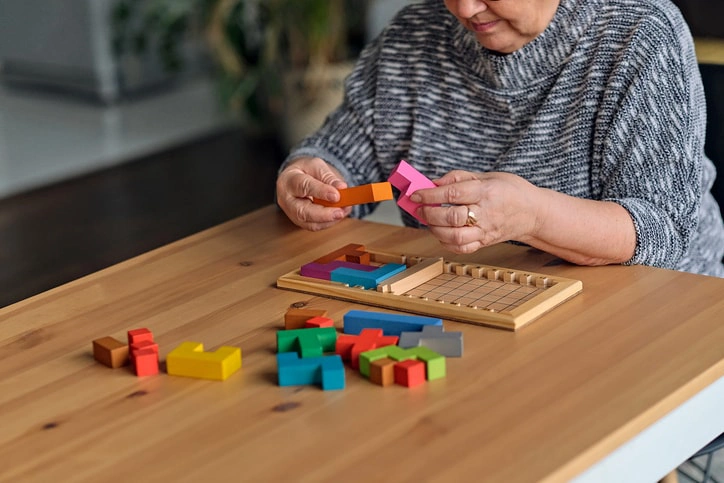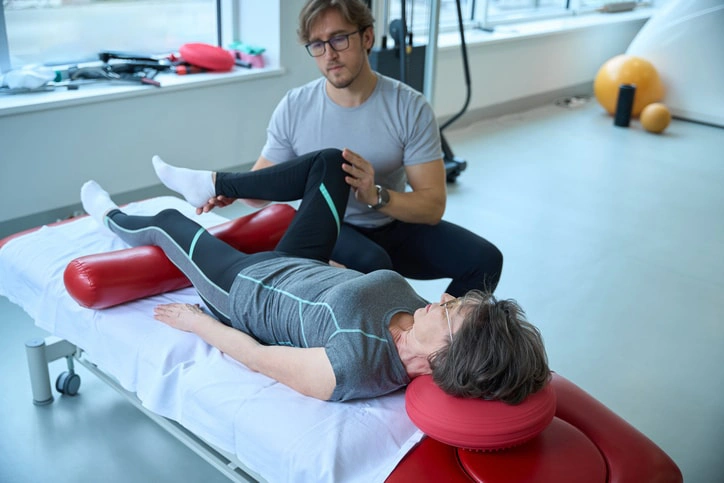Table of Contents
- What is Telehealth Occupational Therapy?
- Benefits of Occupational Therapy Telehealth Services
- Benefits of Telehealth Services for Children
- Telehealth Occupational Therapy for Specific Needs
- How does Telehealth Occupational Therapy Work?
- Telehealth Occupational Therapy and NDIS
- Technology Requirements for Telehealth Occupational Therapy
- The Future of Telehealth Occupational Therapy
- How can we help?
What is Telehealth Occupational Therapy?
Telehealth occupational therapy refers to the delivery of occupational therapy services via digital platforms, allowing adults or children to access therapy from the comfort of their own homes. You still meet with a real person, just by video instead of face-to-face.
Occupational therapists and other allied health services use telehealth, or ‘virtual’ appointments, to provide personalised therapy sessions, tailored to each child’s unique needs and goals – just as they would for in-person appointments.
Occupational therapy can help adults and children develop essential skills, such as fine motor, gross motor, and sensory integration skills, and all of these outcomes can be achieved just as effectively through virtual services as they can face-to-face.
Telehealth is a convenient and accessible way to receive occupational therapy services, especially for families with busy schedules or those living in remote areas.

Benefits of Occupational Therapy Telehealth Services
While it may take a little while to get used to video appointments if you are used to meeting an occupational therapist in person, there are many benefits to having your appointments by telehealth:
Increased accessibility, especially for those in rural, regional or remote areas who may not have services located close by, or may have reduced access to public transport – or even for people whose nearby services are fully booked, with long waitlists.
Convenience – you don’t even need to leave your house! You can access occupational therapy services from anywhere with a reliable internet connection. Not needing to be present at the therapist’s clinic can save you a lot of time and effort.
More affordable as you don’t have travel costs to get to the therapist, and the therapist doesn’t need to pass on travel costs for an in-home visit.
No stress – you don’t need to worry about navigating to your therapist’s offices, public transport or parking. Without these additional worries, you can just focus on getting the most out of your session.
The in-home setting means your occupational therapist can see – via the screen – how things are working in practice for you in your everyday environment. This can be helpful for tailoring your goals and therapy.
Better access to specialised occupational therapy. Occupational therapists often have different areas of expertise and it may be difficult to find the specialised occupational therapy you want in your area. By using telehealth appointments, you can access treatment from a specialised occupational therapist anywhere in Australia (or even the world!).
Benefits of Telehealth Services for Children
There are some additional benefits for children using telehealth appointments for occupational therapy:
Children often struggle with elements of attending appointments at a clinic, such as the change in routine, unfamiliar environments or waiting in the waiting room for the appointment to start. These issues are avoided when children can attend a telehealth session from home.
Online therapy is designed to be engaging and interactive, making sessions a fun and enjoyable experience for children.
Telehealth Occupational Therapy for Specific Needs
Telehealth occupational therapy can be tailored to meet the specific needs of adults or children with a range of conditions, including injuries, autism, ADHD, and psychosocial, physical or intellectual disabilities.

How does Telehealth Occupational Therapy Work?
What to Expect from a Telehealth Occupational Therapy Session
A telehealth occupational therapy session typically involves a video conference with an experienced occupational therapist.
When you make your appointment, usually you will receive a confirmation email with a link to join at your appointment time. Different services will use different video-conferencing platforms, for example Microsoft Teams, Zoom or Google Meet (Goal Coach uses Microsoft Teams). Most platforms will allow you to join on a phone, table or computer.
During the session, the therapist will work with you or your child to discuss challenges and possible strategies, and to complete therapy activities and exercises.
Progress and success in telehealth occupational therapy are measured through regular assessments and evaluations.
Regular progress reports will be provided, allowing you to track progress and adjust the treatment plan as needed.
Tips for Ensuring Effective Telehealth Sessions
As telehealth sessions are a little different from in-person appointments, here are our top tips for getting the most from your virtual appointment:
Firstly, you will need to have a reliable internet connection and a device with a camera, microphone and speaker, such as a computer, smart phone or tablet.
If it’s your first time using that particular platform, it’s a good idea to join 10 or 15 minutes early to make sure it’s working on your device.
A quiet space with minimal background noise is also recommended, so that you or your child can focus on the therapy activities. If you can, choose an area with good lighting so that your therapist can easily see you on the screen.
For children, parents are encouraged to participate in the session, providing support and guidance to the child as needed.
The Role of Parents in Telehealth Occupational Therapy
Parents play an essential role in telehealth occupational therapy, providing support and guidance to the child during sessions.
The online nature of telehealth occupational therapy sessions may also allow both parents to attend the session even when they are in different places.
Parents are encouraged to participate in the session, asking questions and seeking feedback from the therapist as needed.
Paediatric occupational therapists will work with parents to develop a personalised treatment plan, tailored to the child’s unique needs and goals.

Telehealth Occupational Therapy and NDIS
If you have an NDIS plan and occupational therapy is funded, this will also cover telehealth appointments. Occupational therapy comes under the funding category Capacity Building (Improved Daily Living).
If you have available funds in this category, you will be able to use these funds to pay for online therapy sessions, with no out-of-pocket expenses.
Technology Requirements for Telehealth Occupational Therapy
To participate in telehealth occupational therapy, you will need to have a reliable internet connection and a device with a screen, camera, microphone and speaker, such as a computer, smartphone or tablet. Most devices have these in-built, so you won’t need any special equipment.
Depending on the video platform your occupational therapist uses, you may want to download the relevant app, such as Skype, Zoom or Microsoft Teams. However, many of these platforms will also work in your internet browser (such as Safari, Explorer or Chrome).
If you are unsure about the technology you need, your occupational therapist or their reception team should be able to help you out.
The Future of Telehealth Occupational Therapy
Telehealth occupational therapy is a rapidly growing field, with new technologies and innovations emerging regularly.
Telehealth occupational therapy has great potential for improving lives and these developments are helping ensure that people can receive the most effective and efficient therapy services.
How can we help?
Goal Coach’s occupational therapists are experienced at working with people facing a wide range of challenges. With our virtual appointments, location is no barrier: we can work with you and/or your child, no matter where you are in Australia. You won’t have to go on a waiting list to get an appointment with Goal Coach and you can even get started with a 15-minute free chat to make sure the service is right for you.










